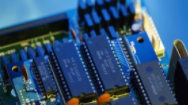In the PCB access step, since it is necessary to unfold and split the substrate, remove the integrated circuit and other components to make a bom form, and expand the scan copy of the pcc bare board after the split. Therefore, in this step, it is accurate The removal of the integrated circuit on the PCB is also a key issue.
Not only in the PCB access step, but also in the PCB component protection step, it is often necessary to extract the integrated circuit from the printed circuit board. Due to the number of integrated circuit pins and /, it is easy to pull out, and sometimes damage the integrated circuit and substrate. Here, we have obtained several precise ways to accurately dismantle the integrated circuit, and hope to help you greatly.
Suction tin removal method: It is a common specialized method to remove the whole block through the suction tin equipment. This method is a general electric soldering iron for both suction and welding. The voltage is less than 35W.

When removing the integrated block, just put the cooled dual-purpose electric soldering iron tip on the pin of the integrated block to be removed. After the crystal grains of the solder joint are melted, After sucking into the fine tin liquid and sucking out all the port die, the integrated block can be withdrawn.
Medical hollow needle withdrawal method: take 8-12 medical hollow needles. When used, the diameter of the conduit just covers the integrated block pin. When removing, use a peeling iron to melt the pin grains, immediately cover the pin with a pipe, then remove the soldering iron and rotate the pipe, and pull out the pipe after the crystal grains have solidified. In this way, the pins are completely peeled from the printed board. Once all ports are completed, the integrated block can be difficult to remove.
DC iron brush removal method: as long as there are subways and large electric brushes, the removal method is intuitive and easy. When disassembling the integrated block, the electric soldering iron is heated first, and when the melting concentration is reached, the crystal grains on the solder feet are melted, and the molten crystal grains are swept away with a brush. In this way, the port of the integrated block can be peeled off from the printed board. This method can be divided into two parts. Finally, use sharp tweezers or a small screwdriver to pry out the integrated block.
Die-added workpiece removal method: This method is a convenient way, as long as some die are added to the ports of the integrated block to be removed, and the PCB solder joints of each row of ports are connected to facilitate heat conduction and removal. When removing, each time a row of pins is cooled, use an electric soldering iron with sharp tweezers or a large "first" floor screwdriver to pry up a pry, and cool the two rows of pins in turn until they are removed. Under normal circumstances, each pin can be removed by cooling twice.
PCB multi-strand copper wire suction removal method: that is, use multi-strand silver core plastic wire to remove the plastic sheath, and use multi-strand silver core wire &40; filament head &41; OK. After use, apply the rosin alcohol solution on the multi-stranded silver core wire. After the electric soldering iron is heated, coat the multi-stranded silver core wire on the pins of the integrated block to cool, so that the solder on the pins is absorbed by the copper wire., Cut off the part that sucked the PCB solder, and the PCB solder on the pin can be completely sucked after many repetitions. If possible, the braided wire among the shielded wires can also be used. As long as the die is sucked, the integrated block can be pulled out by gently prying it with tweezers or a large "one" Chinese screwdriver.